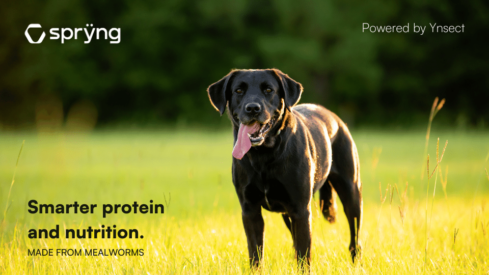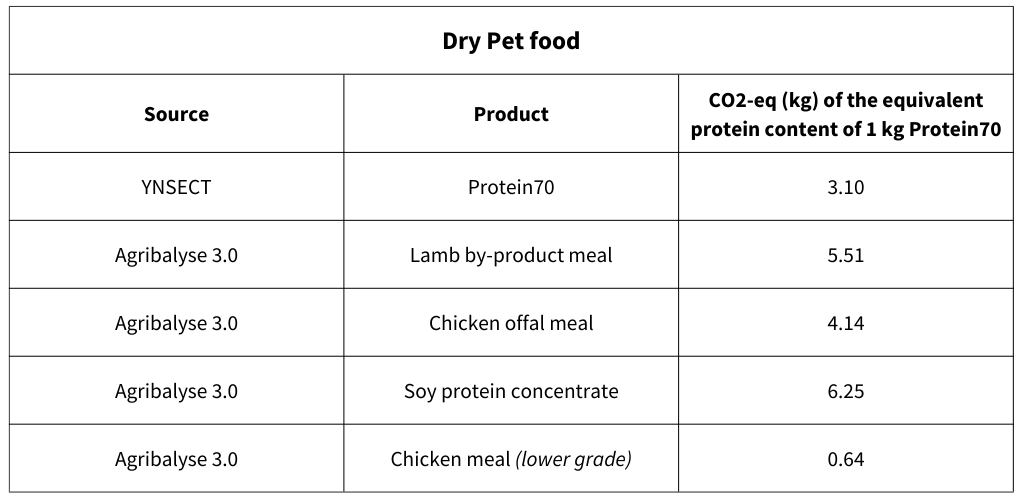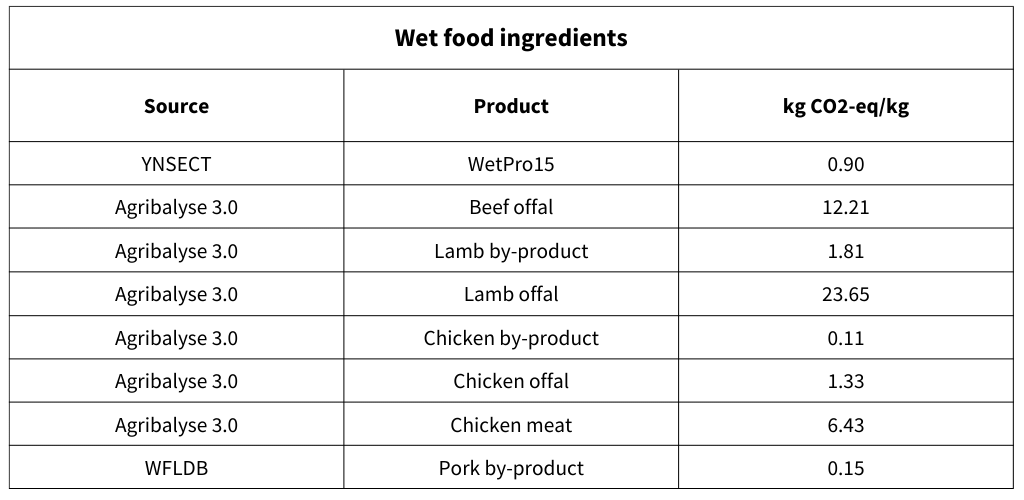Mealworm ingredients improve the nutritional sustainability of pet food

The recent explosion in global pet numbers, coupled with an increasing demand for high quality pet food, has vastly increased the environmental “pawprint” of the pet food industry.
The challenge for the industry is therefore how to make pet foods more sustainable, while maintaining their high quality — and the mealworm ingredients in Ynsect’s pet food portfolio, Sprÿng, may be part of the solution.
Shifting goal-posts in the pet food industry
“Nutritional sustainability” can be defined as “the ability of a food system to provide essential nutrients without compromising the ability of future generations to meet their nutritional needs”(12). This definition makes it clear that there are two components to nutritional sustainability: nutritional quality, and environmental sustainability.
In the early days of the pet food industry, pet foods typically made use of by-products from human food production that would otherwise have been discarded: by giving the best cuts of meat to the humans and the offcuts to the animals, there was little overall waste, and consequently an implicit acceptance that pet foods have negligible environmental impact.
However, the relationship between humans and pets has been shifting in recent years, with pets becoming both more numerous(2,3) and more anthropomorphized(8); and the increasing tendency to consider pets as family members has led to an increase in demand for premium quality, even “human-grade”, pet foods, that have high environmental impact. The pet food industry thus faces a challenge: how to produce these premium quality products without compromising environmental sustainability.
Mealworm protein bridges the gap between nutritional and environmental pressures
The answer may be found in mealworms. A relative newcomer to the pet food market, mealworm ingredients, such as Sprÿng’s Protein70 and WetPro15, have both a very interesting nutritional profile and low environmental impact.
From the nutritional perspective, they have an ash content less than 5%(5,10), are rich in unsaturated fatty acids(6), and have high protein quality: indeed, as measured by DIAAS-like scores, the protein quality of mealworm ingredients has been shown to be competitive with the highest-quality traditional protein sources(11), such as salmon, lamb and beef.
From the environmental perspective, mealworm ingredients have comparatively low impact in terms of their land and water footprint(7), partly because the majority of their diet can be supplied by agricultural by-products.
Furthermore, as presented below, a comparative analysis of data on the carbon footprint of various pet food ingredients shows that Sprÿng’s mealworm ingredients produce fewer GHG emissions per unit of protein than other pet food protein sources of equivalent nutritional quality.
Carbon dioxide-equivalent of mealworm proteins and traditional pet food proteins
An LCA analysis(1) of the carbon footprint of Sprÿng’s dry pet food ingredient, Protein70, has measured its carbon dioxide equivalent to be 3.10 kg CO2-eq per kilogram of the ingredient. In comparison, data from global LCA databases show that the equivalent protein content of a high-quality lamb ingredient produces 5.51 kg CO2-eq — a bit less than twice that of Protein70.
Values for other common dry ingredients are indicated in the table below. Of the dry food ingredients in the table, only the lower-quality product made from chicken meal has a lower carbon footprint than Protein70.
Similar comparisons can be made for wet pet food: Sprÿng’s WetPro15, made from wet blanched whole mealworms, has a carbon footprint of 0.90 kg CO2-eq; a comparable beef offal ingredient scored 12.21 (14 times higher), and a lamb ingredient 23.65 (nearly 26 times higher).
This is particularly interesting when you consider that in general, the GHG emissions of wet pet foods are nine times those of dry pet foods(9) — so identifying low-impact wet ingredients is an environmental imperative. Of the wet ingredients compared in the table, only two made from pork and chicken by-products scored lower than WetPro15.
Mealworm protein is a nutritionally sustainable ingredient
In conclusion, Sprÿng’s mealworm ingredients not only score highly on nutritional quality, but also have a relatively low environmental footprint when compared to other pet food ingredients of equivalent nutritional quality. Thus, a pet food using mealworm as its protein source could be considered a nutritionally sustainable pet food; and indeed, even partial replacement of a more traditional protein source with mealworm would improve the sustainability quotient of the food without compromising its nutritional quality.
In this way, the inclusion of mealworm protein in pet foods could help the pet food market meet the increasing customer demand for premium quality products, without compromising the historic sustainability of the sector.
1.The LCA study was commissioned by Ynsect and carried out by Quantis, and has been reviewed externally by eco2initiative and ICare.
2.https://www.statista.com/statistics/515579/dog-population-europe/
3.https://www.avma.org/blog/pet-populations-are-way
4.https://www.consulting.us/news/6322/pet-ownership-to-keep-growing-after-pandemic-bump
5.Bosch et al. (2014). J. Nutr. Sci. 3: e29. doi:10.1017/jns.2014.23.
6.Lorrette et al. (2022). OCL 29: 22. doi:10.1051/ocl/2022017.
7.Miglietta et al. (2015). Water 7: 6190-6203. doi:10.3390/w7116190
8.Mota-Rojas et al. (2021). Animals 11(11): 3263. doi:10.3390/ani11113263
9.Pedrinelli et al. (2022). Scientific Reports – Nature 12:18510. doi:10.1038/s41598-022-22631-0
10.Rumpold et al. (2013). Mol. Nutr. Food Res. 57 (5): 802–823. doi:10.1002/mnfr.201200735.
11.Protein quality and complementarity of mealworm ingredients for pet food GlobalPets
12.Swanson et al. (2013). Advances in Nutrition 4(2): 141-150. doi:10.3945/an.112.003335


